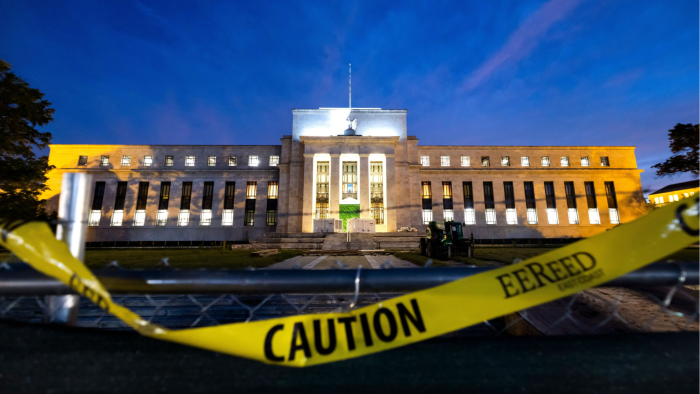A global backlash is brewing against the Fed


Roula Khalaf, Editor of the FT, selects her favourite stories in this weekly newsletter.
In March 2021, when the US Federal Reserve was still buying $120bn-worth of securities a month, Brazil’s central bankers raised their benchmark rate by 0.75 percentage points on the back of concerns that a surge in global commodity prices would trigger inflation.
It took another year for the US central bank to catch on to the fact that price pressures would prove far from transitory and finally raise the federal funds target from near zero. By then, Brazil had increased borrowing costs to 11.75 per cent.
Time has proven Brazil’s monetary guardians right. Yet the Fed’s tardiness in keeping inflation in check is unlikely to leave the South American country — or, indeed, anywhere — unscathed.
The Fed, which on Wednesday made its third 75 basis point increase in a row, is playing catch-up. While that may be the best course of action for the US economy, its aggression is triggering what Maurice Obstfeld, of the Peterson Institute for International Economics, labels “beggar-thy-neighbour” policies. The consequences of the Fed‘s mistakes are effectively exported from the US, burdening America‘s trade partners.
Higher US rates have bolstered the dollar, exacerbating inflation elsewhere by raising the cost of commodities which are, more often than not, priced in the greenback.
A “reverse currency war” is in full flow, with monetary authorities across the world now ditching their standard quarter-point increases in favour of 50, 75 and — in the case of Sweden and Canada — 100 basis point moves in order to stem dollar declines.
Rate rises, while necessary to quell inflation, have become so aggressive the World Bank warned last week they risk sending the global economy into a devastating recession that would leave the world’s poorest countries at risk of collapse.
The World Bank described the situation now as akin to the early 1980s, when the surge in global interest rates and slump in world trade sparked the Latin American debt crisis and a wave of defaults in sub-Saharan Africa.
That comparison rings true. Since the 2008 global financial crisis the Fed and other major market central banks have deployed wave after wave of stimulus. That left global interest rates at ultra-low levels for years on end. The result of that — plus the pandemic — is international debt levels are close to all-time highs.
As financing costs rise, more and more of the world’s poorest countries are seeking support from the IMF and the World Bank. China, meanwhile, is providing emergency support worth tens of billions of dollars to the likes of Sri Lanka, Pakistan and Argentina — creating uneasiness among western creditors, who view the bailouts as opaque and argue they leave states in hock to Beijing.
Some economists want a greater awareness of the spillover effects of its monetary policy and more international co-operation.

Raghuram Rajan, a professor at the University of Chicago’s Booth School of Business and the former head of India’s central bank, said: “If a poorer country over borrows in the good times because global interest rates are low, what responsibility does the US have for that? Does it have none? We need to find a middle ground.”
Yet, it is difficult to see what the US central bank can do but raise rates. When asked about the global repercussions of the Fed’s actions on Wednesday, chair Jay Powell flagged that he, while aware of what was going on elsewhere, had a mandate to lower domestic inflation and protect domestic jobs. It is clear from its economic projections the Fed believes the best way to fulfil that mandate is to impose another 75 basis point increase at its next meeting, followed by a rise of a further 50 basis points before the year ends.
As Mohamed El-Erian, president of Queens’ College, Cambridge, acknowledges, the consequence of the Fed’s reluctance to remove its aggressive monetary policy support until it was too late has placed us “deep into the world of second and third-best solutions”.
Harmful as the repercussions might be, there are no courses of action that are not without pernicious side effects.
Daniela Gabor, a professor at the University of the West of England, has referred to an era of Zugzwang central banking. The toxic combination of lingering inflation and slowing growth has left officials facing a situation common to chess players down on their luck — stuck with nothing but bad moves to play. With inflation in the US still looking distinctly sticky, increasing borrowing costs looks like the least worst.
Comments